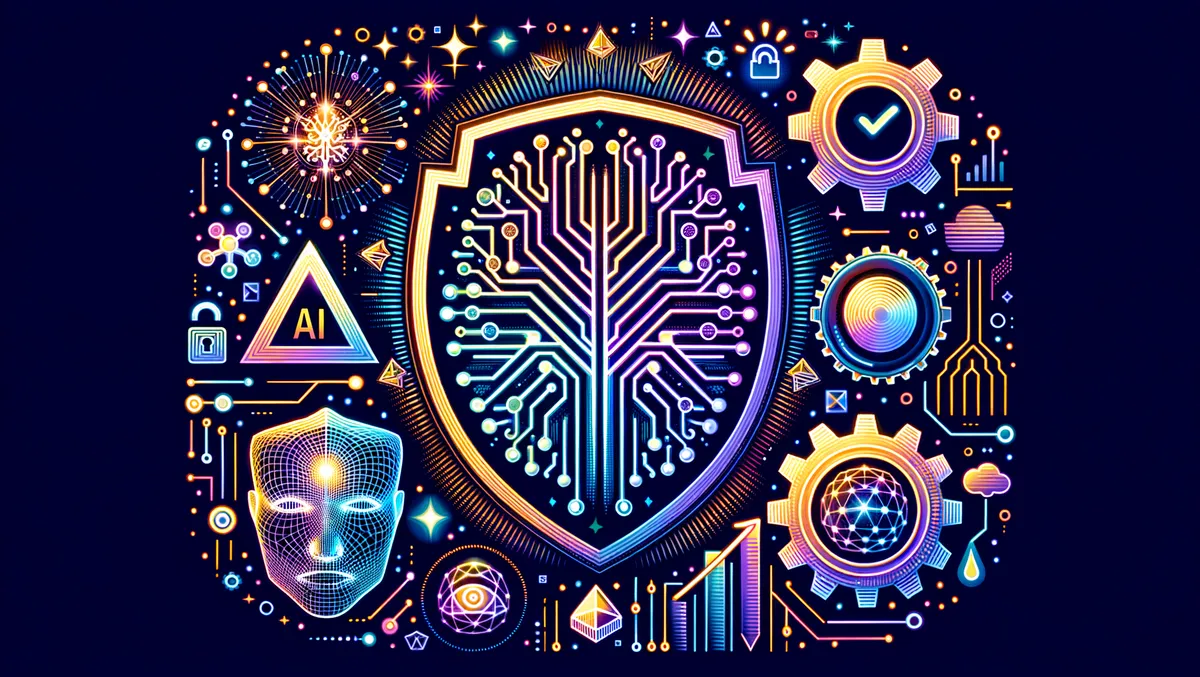
The transformational power of AI in security
The advent of Artificial Intelligence (AI) has brought about significant advancements in various sectors, and one area that is experiencing remarkable transformation is security. AI-powered surveillance cameras have revolutionised the way we approach security, enhancing monitoring capabilities, threat detection, and response systems. In this article, we will explore how AI surveillance cameras are changing the security landscape and the profound impact they have on public safety and crime prevention.
Enhanced monitoring and real-time analysis
AI surveillance cameras have the ability to monitor vast areas with precision and accuracy. Equipped with advanced image recognition algorithms, these cameras can detect and track objects, people, and even abnormal behaviour – all in real time.
The integration of machine learning algorithms allows the cameras to adapt and improve their recognition capabilities over time, making them more efficient at identifying potential security threats. Consider this akin to training a camera to get better at its job as time goes by.
By constantly analysing and interpreting data, AI surveillance cameras essentially provide an extra set of vigilant eyes, ensuring enhanced monitoring of public spaces, residential areas, and critical infrastructure. This moves security towards a much more proactive footing, allowing for deeper, more inclusive planning and, therefore, a stronger security mission in general.
Intelligent threat detection
Traditional surveillance systems often relied on manual monitoring, which was prone to human error and fatigue. Certain reports suggest that the average human can only maintain concentration on something for 12 minutes, leaving lots of scope for missed events.
AI surveillance cameras, on the other hand, excel in intelligent threat detection. Through the aforementioned sophisticated algorithms, they can recognise specific patterns associated with suspicious activities, such as loitering, trespassing, or vandalism. Additionally, AI-powered cameras can differentiate between normal and abnormal behaviour, raising alerts for potential threats and enabling security personnel to respond swiftly and effectively. This proactive approach to threat detection greatly enhances overall security and, in many cases, can help prevent criminal activities before they escalate.
Facial Recognition and Biometric Analysis
Facial recognition technology has been a game-changer in security. AI surveillance cameras equipped with facial recognition algorithms, integrated with a Video Management Software (VMS) platform, can identify individuals in real time, cross-referencing their faces against databases of known criminals or persons of interest.
This capability enhances law enforcement efforts by assisting in locating suspects or missing persons quickly. Moreover, AI cameras can analyse other biometric features like gait recognition, allowing for even more accurate identification and tracking of individuals. However, it is essential to strike a balance between security and privacy concerns, ensuring the responsible and ethical use of such technologies. It is important to note that the system can ONLY detect facial features that have been loaded into it – there remains a lot of misinformation in the wider community about 'big brother' watching every move, but there must be a legitimate reason for an individual to be loaded into a system before their features will be detected. In many cases, this technology can be used for community well-being, such as opt-in programs to maintain responsible gaming.
Predictive analytics and crowd management
AI surveillance cameras can generate valuable insights from the vast amounts of data they collect. By employing predictive analytics algorithms and a data analytics platform, these cameras can identify patterns and trends, aiding in anticipating potential security risks. This information can be used for crowd management during large events or in public spaces prone to congestion. By analysing crowd movements, these cameras help optimise security personnel deployment, prevent overcrowding, and facilitate smooth operations. This proactive approach to security minimises potential risks and improves the overall safety of individuals in crowded environments.
Streamlined emergency response
In emergency situations, time is of the essence. AI surveillance cameras play a vital role in streamlining emergency response procedures. By integrating with centralised security systems, AI cameras can automatically trigger alerts in the event of an emergency, such as detecting a fire or gunshots or identifying suspicious packages. These real-time alerts enable security personnel to respond promptly, saving crucial time in assessing the situation and initiating appropriate emergency protocols. The integration of AI cameras with emergency response systems enhances coordination and improves overall emergency management.
To conclude, AI surveillance cameras are revolutionising the security landscape by enhancing monitoring capabilities, enabling intelligent threat detection, and streamlining emergency responses. These cameras leverage advanced algorithms to provide real-time analysis, facial recognition, and predictive analytics. While their deployment raises ethical and privacy concerns, when used responsibly, AI surveillance cameras contribute significantly to crime prevention and public safety. As technology continues to advance, we can expect further developments in AI surveillance systems, leading to more efficient security measures and safer environments for everyone.

